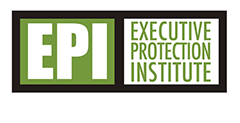With travel come inherent risks that can jeopardize the safety and well-being of high-profile individuals. This is where travel risk management plays a critical role. Understanding the importance of travel risk management and implementing effective strategies can help minimize potential threats and mitigate risk.
We will examine the key components of travel risk management and provide insight into how to assess risks, prepare for safe travel, mitigate threats, respond to emergencies, and enhance executive protection skills.
What is travel risk management?
Developing an effective approach to this topic begins with understanding the concept at its core. Itinvolves the systematic identification, assessment, and mitigation of travel risks.
By proactively addressing potential threats, travel risk management aims to ensure the safety and security of individuals throughout their travel endeavors.
Let’s discuss some of the key elements :
Threat assessment and intelligence: Thorough threat assessment and intelligence gathering form the foundation of travel risk management. This involves analyzing geopolitical situations, local crime rates, and other relevant factors to identify potential risks that may arise during travel. By staying informed and updated on current events and trends, executive protection professionals can better anticipate and address potential threats.
Pre-travel planning and preparation: Effective travel risk management begins long before departure. Pre-travel planning and preparation involve developing comprehensive travel protocols, establishing policies and procedures, and creating emergency contact lists. By implementing clear guidelines and communication channels, the likelihood of encountering unexpected situations can be significantly reduced.
Mitigation strategies: Mitigating risks is a crucial aspect. This entails implementing security measures such as accommodation and transportation security, personal security protocols, and cybersecurity best practices. It is possible to minimize risks by addressing vulnerabilities and strengthening protective measures.
Emergency response and crisis management: Despite meticulous planning, emergencies can still occur. A robust strategy includes developing crisis response plans encompassing emergency evacuation procedures, medical assistance, and support, as well as communication and coordination protocols. Additionally, managing crisis situations through incident command structures and conducting post-incident analysis helps enhance future preparedness and mitigate potential risks.
Identifying and mitigating potential threats
To effectively manage travel risks for high-profile individuals, it is crucial to identify potential threats. Political and social unrest, health and medical concerns, transportation and infrastructure issues, and physical threats are some key areas to consider. Thorough risk assessments should encompass these aspects to ensure comprehensive executive protection.
Conducting risk assessments involves research, analysis, and gathering reliable information. Executive protection professionals must utilize various resources and tools available to identify and evaluate potential risks accurately. By utilizing effective risk assessment methodologies like scenario planning and data analysis, it becomes possible to identify potential vulnerabilities and implement suitable mitigation strategies.
Developing comprehensive travel protocols is vital to travel risk management. This includes establishing travel policies and procedures that outline safety guidelines, emergency response protocols, and incident reporting mechanisms. Creating detailed emergency contact lists and implementing efficient communication channels enable swift action in times of need.
Equipping individuals with the necessary skills and knowledge is also a crucial aspect of travel risk management. Training programs focusing on security awareness, threat recognition, first aid, emergency response, cultural sensitivity, and communication skills enable executive protection professionals to handle diverse situations effectively.
Implementing robust security measures forms a cornerstone of effective travel risk management. This includes ensuring secure accommodations and transportation, adhering to personal security best practices, and proactively addressing cybersecurity threats. By implementing these measures, the overall safety and security of individuals during travel can be significantly enhanced.
Leveraging local resources and partnerships can also provide invaluable support during travel. Collaborating with local law enforcement and security services as well as trusted ground operators and providers ensures access to local expertise, knowledge, and assistance in times of need.
Effective crisis response plans and managing crisis situations
Developing comprehensive crisis response plans is crucial to effectively handle emergencies. This involves establishing emergency evacuation procedures, coordinating medical assistance and support, and implementing communication protocols to ensure effective and timely response during critical situations.
In times of crisis, proper management is essential. By implementing structured incident command structures and conducting post-incident analysis, lessons learned can be identified and used to enhance future crisis response strategies.
Empowering professionals for optimal performance
Executive protection is dynamic, requiring professionals to continuously update and expand their skills and knowledge. Staying updated on travel risk trends through ongoing professional development activities, and attending training programs, and workshops ensures the ability to adapt to evolving risks and challenges.
Incorporating technology and tools into travel risk management processes can also significantly enhance the effectiveness of professionals. Travel risk management software, global tracking and monitoring systems, and other technological advancements provide real-time insights and facilitate prompt decision-making.
Conclusion
Travel risk management is a vital aspect of executive protection. By proactively assessing and mitigating risks through thorough threat assessment, pre-travel planning, and the implementation of effective security measures, travel risks can be minimized.
Additionally, developing crisis response plans and enhancing emergency management capabilities ensure swift and efficient responses to unexpected situations. By understanding the importance of travel risk management and implementing strategies outlined in this article, professionals can effectively assess risks, prepare for safe travel, mitigate potential threats, respond to emergencies, and continuously enhance their executive protection skills.
Prioritizing travel risk management ensures minimized risks, enhanced safety, and peace of mind during travel endeavors.
Click on the link below, check out our Training Calendar and see how the Executive Protection Institute can help you further your EP career.


